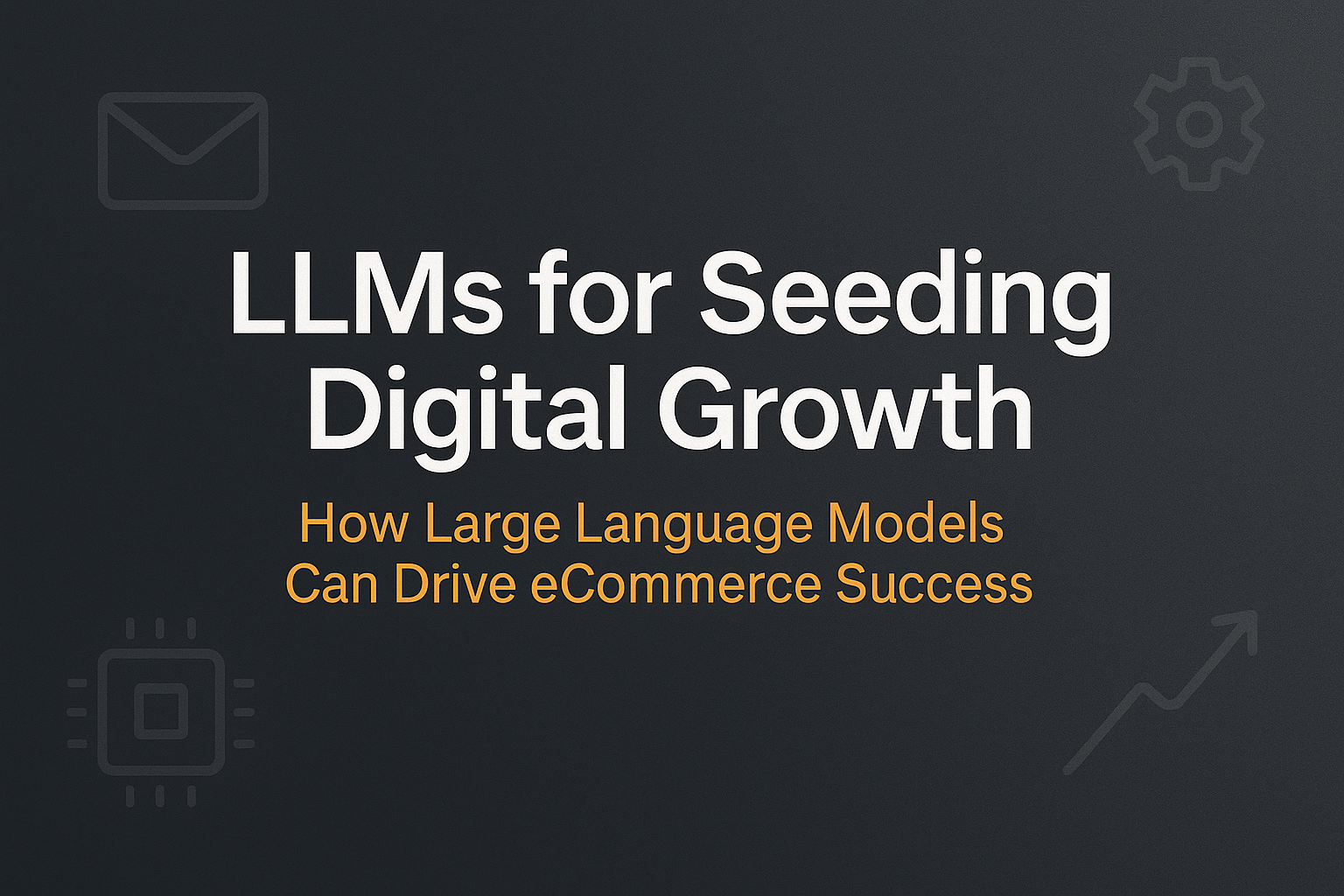For the last decade, most businesses have focused almost entirely on search engine rankings. The playbook was simple: climb to the top of Google, win the clicks, convert the traffic. That model still matters, but the picture has changed.
Today, AI driven search and assistants such as ChatGPT, Gemini, and Perplexity are transforming how people discover brands and make decisions. Increasingly, your potential customer might never even click through to your site. Instead, they’ll ask an AI tool, get an answer, and move on.
So the challenge becomes clear: how do you make sure your brand appears in those AI answers?

That’s where LLM seeding comes in, Neil Patel explains it well in his blog on LLM seeding.
What Is LLM Seeding?
Put simply, LLM seeding means structuring and distributing your content in ways that make it easy for large language models (LLMs) to read, understand, and cite. Unlike traditional SEO, this approach isn’t about fighting for the number one spot on Google. Instead, it’s about becoming part of the conversation — even when the user never visits your site.
Learn more about our SEO & Content Strategy services.
Why LLM Seeding Matters for Your Business
First, it provides brand visibility without clicks. For example, imagine a shopper asking ChatGPT, “What are the best ecommerce side hustles for beginners?” If your content is cited, that’s exposure — even without a direct visit.
Second, it builds authority by association. When your business is mentioned alongside established leaders, credibility follows.
Finally, it ensures future proofing. The shift to AI generated answers is only accelerating, and those who adapt early will outpace competitors still playing catch-up.
How to Seed Your Content for LLMs
Many blogs talk theory, yet very few explain the steps. To get started effectively, follow these four areas of focus.
1. Publish Content in AI Friendly Formats
To begin with, clarity matters. LLMs prefer structure over fluff, so create content that’s easy to parse.
- Listicles: “Top 5 Ecommerce Platforms for Small Businesses in 2025”
- FAQs: Dedicate a section on each page to real customer questions
- Comparison tables: Clear “X vs Y” breakdowns
- Pros and cons lists: Side by side formats that are easy for models to reference
See how we optimise Conversion Rate Optimisation (CRO) by simplifying content and customer journeys.
2. Spread Content Beyond Your Own Site
Your blog is the starting point, but it cannot be the end. To increase reach:
- Repurpose blogs into LinkedIn articles
- Answer niche questions on Quora or Reddit, linking back where relevant
- Guest post on trusted industry sites
The more surfaces your content appears on, the greater the chance AI crawlers will pick it up.
3. Show Real World Authority
One weakness of AI-generated content is its lack of personality. Consequently, businesses that inject authority and lived experience stand out.
- Add an author bio that highlights real expertise in ecommerce and digital leadership
- Share first hand insights (“When I led digital operations for a global brand, we tested…”)
- Reference credible sources — industry reports, case studies, and verified statistics
See how our Fractional Leadership helps brands bring senior expertise into content and strategy.
4. Add Assets LLMs Can Read
Moreover, LLMs interpret structured data easily. So, break up text-heavy pages with assets such as:
- Salary tables for ecommerce roles
- Step by step checklists for launching a side hustle
- Pros/cons tables for business models like dropshipping or affiliate marketing
How to Measure Progress
Unlike SEO, the goal here is not traffic alone. Instead, you should track progress through different signals:

- Check AI tools directly: Ask ChatGPT or Gemini your target questions. Are you cited?
- Track mentions: Tools like Semrush or Brand24 highlight new references.
- Look for unlinked citations: Even without backlinks, brand mentions boost visibility.
Tracking tools like GA4 give you the data you need to understand how LLM seeding efforts translate into visibility.
FAQ
- What does LLM seeding mean in digital growth?
- It’s the practice of training or prompting large language models with your own brand, product, and audience context so AI outputs align with your positioning and goals.
- Why does LLM seeding matter for SMEs?
- Because generic AI outputs sound like everyone else. Seeding ensures your content, ads, and insights reflect your brand tone and customer pain points.
- How can SMEs start seeding AI models?
- Document your brand voice, value propositions, customer segments, and key offers. Feed these into prompt libraries or custom GPTs before producing marketing or content.
- Do we need our own private AI model?
- Not at first. Most SMEs can use public tools safely by avoiding sensitive data and controlling prompts. Move to private instances only when scale or confidentiality demand it.
- What results should we expect from LLM seeding?
- Faster, more consistent content creation, sharper audience relevance, and measurable lift in engagement or conversion due to improved message consistency.
The Takeaway
In conclusion, LLM seeding isn’t about abandoning SEO. Rather, it’s about expanding reach into the AI ecosystem. If you delay until competitors move, you’ll always be one step behind.
So, start small. Restructure one blog into a listicle or FAQ format, republish it on LinkedIn, and check how AI tools respond after a month.
Ready to clear the grey in your growth strategy? Book a discovery call today.
